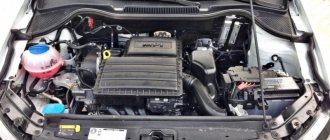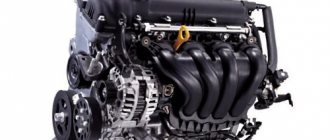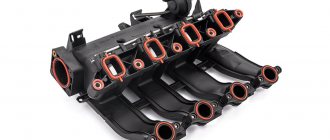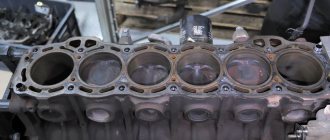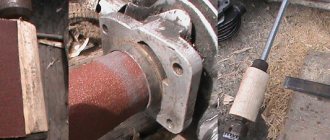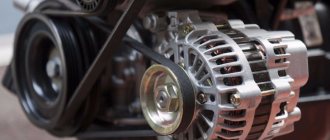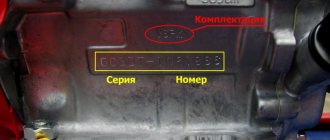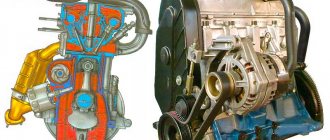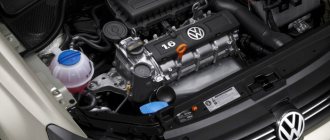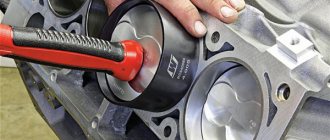To identify the vehicle and reliably select the engine of the BMW X5 I E53 Closed SUV , you should carefully select the vehicle modification. To do this, use clarifying information with data containing: power, measured in horsepower (example 103 hp), engine size (example 1.6 liters), type (example gasoline) and model + engine code, as a rule, this parameter rarely used, but you can only find it in the vehicle title, you can also pay attention to the drive axle (there are rear, front or all-wheel drive), and a mandatory parameter is the release date, which divides the vehicle model into restyling, pre-restyling, first and last year production.
This data serves to uniquely install spare parts during a certain production period, as manufacturers are constantly upgrading cars off the assembly line.
Select the vehicle modification to search for the engine
- BMW X5 I E53 Closed SUV 3.0 i 222 hp
id14801 Engine: volume - 3 liters, power - 222 hp, type - petrol, model - M54 B30 (306S3). Drive: full. Year of manufacture: 2000-2006 - BMW X5 I E53 Closed SUV 3.0 228 hp
id106008 Engine: volume - 3 liters, power - 228 hp, type - petrol, model - M54 B30 (306S3). Drive: rear. Year of manufacture: 2000-2006 - BMW X5 I E53 Closed SUV 3.0 i 231 hp
id17176 Engine: volume - 3 liters, power - 231 hp, type - petrol, model - M54 B30 (306S3). Drive: full. Year of manufacture: 2000-2006 - BMW X5 I E53 Closed SUV 4.4 i 286 hp
id13042 Engine: volume - 4.4 liters, power - 286 hp, type - petrol, model - M62 B44 (448S2). Drive: full. Year of manufacture: 2000-2003 - BMW X5 I E53 Closed SUV 4.4 i 320 hp
id17624 Engine: volume - 4.4 liters, power - 320 hp, type - petrol, model - N62 B44. Drive: full. Year of manufacture: 2003-2006 - BMW X5 I E53 Closed SUV 4.6 is 347 hp.
id16328 Engine: volume - 4.6 liters, power - 347 hp, type - petrol, model - M62 B46 (468S1). Drive: full. Year of manufacture: 2002-2003 - BMW X5 I E53 Closed SUV 4.6 is 355 hp.
id35790 Engine: volume - 4.6 liters, power - 355 hp, type - petrol, model - M62 B46 (468S1). Drive: full. Year of manufacture: 2001-2003 - BMW X5 I E53 Closed SUV 4.8 is 360 hp
id18044 Engine: volume - 4.8 l., power - 360 hp, type - petrol, model - N62 B48 A. Drive: four-wheel drive. Year of manufacture: 2004-2006 - BMW X5 I E53 Closed SUV 3.0 d 184 hp
id13043 Engine: volume - 3 liters, power - 184 hp, type - diesel, model - M57 D30 (306D1). Drive: full. Year of manufacture: 2001-2003 - BMW X5 I E53 Closed SUV 3.0 d 211 hp
id34968 Engine: volume - 3 liters, power - 211 hp, type - diesel, model - M57 D30 (306D2). Drive: full. Year of manufacture: 2003-2006 - BMW X5 I E53 Closed SUV 3.0 d 218 hp
id17625 Engine: volume - 3 liters, power - 218 hp, type - diesel, model - M57 D30 (306D2). Drive: full. Year of manufacture: 2003-2006
In the next step, for an expanded selection, you can enter the vehicle's Vin code to go to illustrated catalogs, where you can find the layout of parts down to the bolt and duplicates that are not in the catalog of analogues.
See also other spare parts
Autodismantling Legend
BMW X5 E53 is the first generation of legendary crossovers, which enjoy well-deserved popularity in many countries around the world. Sales of the car started in 1999 in the USA. A year later it could be purchased in Europe. And in 2003, the model range was updated: the design of the front part and the range of engines changed.
Now the BMW X5 E53 engine is available in two configurations:
- The original “six” M54, designed for 3 liters. fuel and having a power of 231 hp.
- V-shaped “eight” M62, with a power of 286 hp. and a volume of 4.4 liters.
In 2001, there was an addition to the model range: a six-cylinder diesel M57 with a power of 184 hp appeared. and a V-shaped gasoline engine with a power of 347 hp. The following changes were implemented in 2003, after restyling. The diesel engine has become more powerful - 218 hp, and the gasoline engine has increased power to 360 hp.
Engine features and typical breakdowns
The most popular model is the 3 liter naturally aspirated petrol. It is considered low maintenance and reliable. Its resource is designed for a mileage of over 250 thousand km. Only after achieving this indicator may the first problems in work appear. In samples with a volume of 4.4 liters, the liners often rotate and scuffs appear on the cylinder walls. True, such problems begin to be observed after the car has covered a mileage of over 200 thousand km. All these faults can be solved by replacing the motor and carried out in specialized service centers. It will be possible to significantly reduce repair costs if the craftsmen can sleeve the cylinder on which the first deformations appeared.
If we look at gasoline models, we come across problems that are common to all. One of the main ones is the ventilation valve. Over time, the channels designed to remove crankcase gases become clogged. This leads to the accumulation of condensation, which is especially fraught with consequences in winter. The channel freezes and oil begins to squeeze out through the dipstick. If you do not notice this breakdown in a timely manner, you will subsequently have to deal with such a phenomenon as engine oil starvation. Later, in models, the channel tubes began to be treated with a heat-insulating coating, but even this did not completely get rid of the problem. The only correct way out of this situation is to replace the failed valve with tubes.
Another problem that is classified as a “typical breakdown” is the cap of the reservoir where the coolant is located. A valve is built into the cover, which is designed to maintain stable operating pressure in the cooling system. No part will last forever and the valve is no exception. In the summer heat, it can jam, which leads to rupture of the expansion tank. As a result, there will be no fluid in the system and this causes the engine to overheat. This malfunction can be eliminated by replacing the already broken expansion tank. It would also be a good idea to check the condition of the gearbox thermostat. At high mileage, the thermostat housing begins to crumble. The cost of a new part is low, and its timely replacement will avoid other, more significant breakdowns.
If the car has a mileage of over 200 thousand km, you should be prepared for the appearance of noticeable noise and rumble of the VANOS gas distribution system. If you start a cold engine, you can hear a rumble, and over time, vibrations are also observed.
Main causes of malfunctions
BMW X5 E53 engine repair is often required due to the following reasons:
- Insufficient oil level in the crankcase. If the car is taken to a service station, the oil needs to be changed. Situations when there is an increased consumption of liquid or when it is poured less than required lead to breakdown. Problems with the oil level cause overheating of the rubbing elements. The result is an emergency shutdown of the engine.
- A clogged channel that removes gases from the crankcase. As time passes, the channels begin to clog and condensation forms on them. In winter, the condensate freezes and the oil is squeezed out of the dipstick. A clogged channel causes oil starvation of the engine and significantly reduces its service life.
- Wear of oil seals and gaskets of the engine crankcase. The result is loss of oil and constant overheating of the engine. Faulty spark plugs can also lead to engine detonation. It is worth noting that the spark plugs need to be changed after the car has covered a mileage of 40 thousand km. Or do this after every third oil change.
- Turbocharger malfunctions. Its operation is controlled by a motor converter. If the turbocharger fails, the pressure sensor is activated. Next, the pipes connected to the intercooler become depressurized. The driver will notice frequent interruptions in engine operation.
- Damage to a valve that is part of the cooling system. The valve is the main component of the expansion tank. If the valve becomes clogged, the tank will explode. As a result, engine repair will be required due to its constant overheating.
- Problems with hydraulic compensators. The driver usually notices such malfunctions immediately, because when the engine starts, a rumble is heard and noticeable vibrations are observed. In case of such a breakdown or in case of problems with timing chain stretching, the broken parts will need to be replaced, since they cannot be repaired.
Repair of the BMW X5 E53 engine is required very rarely and most of the breakdowns occur after the car has a mileage of over 200 thousand km. Such motors are highly reliable and durable; they can serve flawlessly for over 10 years. In order to avoid costly repairs and prevent malfunctions, you should regularly undergo scheduled and periodic maintenance.
Photo catalog of BMW X5 E53 spare parts:
- Soundproof engine cover
- The reverse control unit for the DME system is programmed.
- Tailgate Bx
- Sun visors with illuminated toilet mirror.
- Luggage compartment loading floor, retractable
- Water hose - 500 rub.
- Windshield washer pump — 700 rub.
- Battery tray cover - 500 rub.
- Fan clutch and water pump — RUB 1,975
- Tension roller with lever - 500 rub.
- Steptronic gear shift mechanism - 1000 rubles
- Repair kit for brake linings, non-asbestos - 500 rub.
Fuel system
Fuel tank, Water level sensor, Fuel level sensor, Tank vent valve, Fuel tank button, Fuel tank cap, Fuel neck, Fuel pump, Fuel pump, Fuel pump strainer, Fuel pump gasket, Fuel pump relay, Fuel injector, Injector ring, Throttle valve, Sensor throttle valve, Throttle pipe, Idle air regulator, Air receiver, Throttle valve heating tube, Turbine (turbocharger), Turbine gasket, Solenoid valve, Injection pump, Injection pump valve, Compressor, Compressor gasket, Carburetor, Fuel rail (rail), Fuel pressure regulator , Fuel line, Fuel valve, Fuel hose, Fuel pipe, Air flow meter, Engine control unit, Air pipe, Intake manifold, Intake manifold gasket, Additional air pump, Fuel pump, Gas pedal, Potentiometer, Throttle cable
Main malfunctions of the BMW X5
The BMW X5 is not only an excellent means of transportation, equipped with advanced technological solutions and sophisticated electronic devices, but also a car that requires regular care. Car maintenance after reaching a certain mileage is the key to safety and comfortable operation.
BMW X5 malfunctions
No matter how perfect the car is, it does not cause any inconvenience to the owner during the first tens of thousands of kilometers, but as the mileage increases, the following problems begin:
- Natural wear and tear of parts. You don’t need to think that only the suspension or rims suffer because of bad roads. Due to extreme vibrations and constant impacts on potholes, both automatic transmission parts and engine parts fail, even door locks and window regulators can be sensitive to such influence.
- Impact of the external environment. This general definition includes:
- snow,
- rain,
- condensate,
- temperature changes.
These factors can damage door and glass seals. They can damage parts of door locks, lighting devices, glass cleaning systems, and electronic control units.
- Careless operation. The car must be driven carefully, cared for as much as possible, and maintenance avoided. Engine oil, like automatic transmission oil, becomes clogged with small metal shavings from rubbing parts of mechanisms and impurities from fuel. Accordingly, the properties of the oil are lost over time and it needs to be changed from time to time. When hitting curb stones, various suspension parts can fail. Even the way you drive a car greatly affects the range until the next maintenance. Thus, sudden acceleration and driving at high speeds quickly damage the gearbox. Using the sunroof in the cold season reduces its trouble-free operation life.
Repair of faulty parts
Car repairs must be approached by carefully weighing all factors:
- complexity of breakdown;
- availability of skills to repair breakdowns;
- Availability of tools and spare parts.
The complexity of the breakdown, of course, varies from replacing a fuse or light bulb to a major engine overhaul. The approach to assessing a malfunction, first of all, should be based on the possibilities of self-repair. If you don’t have the necessary skills or a basic understanding of what to do, it’s better to contact a car service even to replace a fuse. If you have the skills, but their degree borders on uncertainty, you should also contact a car service center. In specialized workshops, workers have everything to repair a car: the necessary equipment, spare parts, experience.
If you are serious about partially independent repairs, then you should separate what can be repaired yourself and what can only be repaired by a service center.
Most often, owners themselves change:
- electronic control units for air conditioner fan, gearbox;
- door locks;
- window regulators;
- moving parts of the hatch mechanism;
- suspension parts.
When starting any repair with your own hands, you should always evaluate the result obtained from the point of view of the further safe operation of the machine.
Similar articles:
leave a comment
Click to cancel reply.
